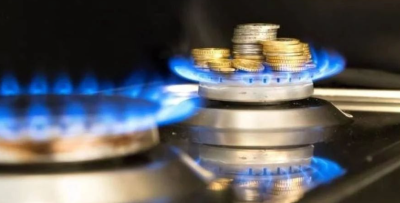Save electricity, turn on one less light, and dedicate a piece of love. Saving electricity is not just a slogan, but also requires practical actions. The more you save electricity, the more beautiful the future will be.


Save electricity, turn on one less light, and dedicate a piece of love. Saving electricity is not just a slogan, but also requires practical actions. The more you save electricity, the more beautiful the future will be.
1 kWh of electricity can make a computer work for 4 hours, an electric fan work for 15 hours, an air conditioner run for 1.5 hours, and provide continuous lighting for a 9-watt energy-saving lamp for 100 hours.
Saving electricity is not only a basic requirement for saving resources and protecting the environment, but also an effective means to smooth out peak loads and ease power shortages. Starting from now, we should actively respond to peak electricity consumption, strictly practice the spirit of "thrift and diligence", and jointly create a stable electricity consumption environment.
Natural gas is not a renewable energy. Natural gas is a non-renewable energy source because it is formed by the long-term transformation and metamorphic cracking of ancient biological remains underground, and is a gaseous hydrocarbon. Natural gas is usually produced together with crude oil during the mining process. Although it takes millions of years to form, humans cannot regenerate it naturally in a short period of time, so it is classified as a non-renewable energy source.
As a clean energy source, natural gas has many excellent properties. It does not contain carbon monoxide and is lighter than air. Once it leaks, it will immediately spread upward and is not easy to accumulate to form explosive gas, so it is safer. The use of natural gas can reduce the use of coal and oil, thereby greatly improving environmental pollution problems. Natural gas can reduce sulfur dioxide and dust emissions by nearly 100%, reduce carbon dioxide emissions by 60% and nitrogen oxide emissions by 50%, and help reduce acid rain formation and alleviate the global greenhouse effect.
So saving natural gas is also very important for us.
How to reduce natural gas costs:

- Use efficient and energy-saving natural gas appliances
One of the main reasons for the high cost of natural gas is that the natural gas appliances used are inefficient and waste a lot of energy. Nowadays, there are many efficient and energy-saving natural gas appliances on the market, such as gas stoves, gas water heaters, etc. These appliances can more effectively convert natural gas into heat energy when used, thereby improving the utilization rate of heat energy, reducing energy waste, and thus reducing natural gas costs.
- Keep the natural gas pipeline unobstructed
Natural gas pipelines may have various blockages and gas leaks during long-term use, resulting in incomplete combustion of gas, energy waste, and even threats to safety. Therefore, it is very important to keep the natural gas pipeline unobstructed. Natural gas pipelines can be cleaned and inspected regularly to eliminate possible hidden dangers, improve pipeline operation efficiency, and reduce economic losses and safety hazards.
- Choose the right natural gas supplier and optimize the use method
Natural gas suppliers in different regions may show huge gaps due to different prices and services, so choosing the right natural gas supplier is also an important factor in reducing natural gas costs. In addition, the rational use of natural gas can also reduce natural gas costs. For example, when cooking food, you can boil the water before turning on the fire, which can save a lot of natural gas; when using a natural gas water heater, you can appropriately lower the water temperature and shorten the use time to reduce natural gas consumption.
In general, reducing natural gas costs requires multiple aspects, including using efficient and energy-saving natural gas appliances, keeping natural gas pipelines unobstructed, choosing a suitable natural gas supplier and optimizing usage methods. Only by optimizing these aspects can we truly achieve the goal of reducing natural gas costs.
Save electricity in life:

- Lights:
- Turn off lights when you are not around;
- Use energy-saving lamps instead of incandescent lamps. Compared with incandescent lamps, energy-saving lamps have higher light efficiency. Under the same wattage, an energy-saving lamp saves 70%-80% more energy than an incandescent lamp.
- Air conditioner:
Studies have shown that every 1 degree increase in air conditioning can save 6%-8% of electricity. It is recommended to adjust the air conditioner in the office to a suitable temperature, preferably not lower than 26℃ in summer.
- Microwave oven:
After taking out the frozen food in the refrigerator, it can be thawed naturally before being put into the microwave for heating.
- Refrigerator:
- The refrigerator should be placed away from heat sources and avoid direct sunlight;
- There should be gaps when storing food, and it can be placed 70% to 80% full;
- Do not open the refrigerator door for a long time or frequently;
- Defrost in time.
- TV:
- When the appliance is in standby mode, it still uses electricity. Turning off power in time can reduce waste;
- Under the condition that it does not affect viewing, the brightness of the TV screen can be appropriately reduced and the volume of the TV can be lowered.
What can 1 kWh of electricity do?
1 kWh of electricity can make a computer work for 4 hours, an electric fan work for 15 hours, an air conditioner run for 1.5 hours, and provide continuous lighting for a 9-watt energy-saving lamp for 100 hours.
Saving electricity is not only a basic requirement for saving resources and protecting the environment, but also an effective means to smooth out peak loads and ease power shortages. Starting from now, we should actively respond to peak electricity consumption, strictly practice the spirit of "thrift and diligence", and jointly create a stable electricity consumption environment.


